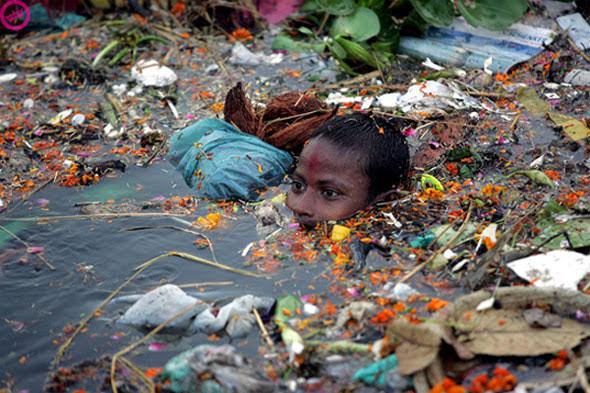

| Online: | |
| Visits: | |
| Stories: |

| Story Views | |
| Now: | |
| Last Hour: | |
| Last 24 Hours: | |
| Total: | |
Unwrapping the problem of plastic packaging
Read aguanomics http://www.aguanomics.com/ for the world’s best analysis of the politics and economics of water
Corneill writes*
Packaging is frighteningly annoying. Just the other day, I had the most maddening tussle with the plastic packaging surrounding the cardboard box which housed my newly purchased tea bags – neither my nails nor a Swiss army knife provided any help in opening it, at which point I speared the box with the biggest knife I could find and tore the entire thing open. However, I couldn’t help but (eventually) shift the blame to myself as I could have bought tea which was packaged in one cardboard box, instead of a smidgen of leaves wrapped in paper inside a cardboard box covered with plastic, which in retrospect seems to be a little bit excessive. But just how excessive has plastic packaging become in our society, and how much of it is going to waste?
Plastic packaging is not only the main adversary in keeping me away from my tea, but is also a worldwide environmental problem. Currently, 5.35 trillion pieces of plastic debris is present in the world’s oceans with more than 269 thousand tonnes of this floating on the surface. Data from the United Nations Environmental Programme suggests that global plastic consumption has risen from 5.5 million tons in the 1950s to 110 million tons in 2009. This is a worrying trend, as plastic packaging wreaks havoc on our both our bodies and our environment. These include and are not limited to: compounds being absorbed by humans which have been found to have adverse health effects, injuring or poisoning wildlife, (in the ocean) serving as mini transportation devices for invasive species and leaching harmful chemicals in landfills that spread into groundwater. Furthermore, plastic pollution is decreasing in size – research is showing that micro-plastic particles are becoming more prevalent in both the air and our oceans worldwide, which has additional harmful effects.
Given that plastics can only be recycled once before it loses its useful properties, how should we replace and phase out this seemingly essential component of our modern lives? Does the solution lie in biodegradable plastics? Could this long-touted plastic substitute which totally biodegrades in the environment be the solution?
If only this were the case. Apart from companies often misleading consumers into believing that the plastic they use is totally biodegradable, one of the risks associated with these biodegradable plastics is that if they are broken down in an oxygen-free environment (such as a landfill) methane will be produced. This is 23 times worse than carbon dioxide as a greenhouse gas. Moreover, a lot of plastics labelled biodegradable, such as shopping bags, will only break down in temperatures of 50 degrees Celsius. This temperature will not be found in the ocean, where a significant amount of plastic pollution ends up. Since they are also not buoyant, these plastics will sink and thus not be exposed to UV radiation, which is a key component in helping them biodegrade. Combined with the notion that littering can be a large cultural and behavioural problem, it may not be a great idea to create products biodegradable which may make issue of littering even worse, as people might think that it is acceptable now that they will harm the environment less.
Whilst well-intentioned, perhaps it is erroneous to focus on finding ways in which throwing away products becomes easier in the name of helping the environment. However, at this point, with the lack of viable substitutes which could be implemented on a global scale being available anytime soon, it may be a temporary solution which reduces the impact our consumption driven lives have on the environment, which can only be a good thing.
Bottom Line Plastic packaging is a huge global environmental problem, with numerous harmful effects on humans and the environment, and biodegradable plastics are currently not a good enough solution to fix this in the long run.
* Please comment on these posts from my environmental economics students, to help them with unclear analysis, alternative perspectives, better data, etc.
Source: http://www.aguanomics.com/2017/02/unwrapping-problem-of-plastic-packaging.html




